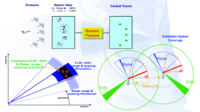
Photo from wikipedia
In wireless sensor networks, effective link quality estimation is the basis of topology management and routing control. Effective link quality estimation can guarantee the transmission of data, as well as… Click to show full abstract
In wireless sensor networks, effective link quality estimation is the basis of topology management and routing control. Effective link quality estimation can guarantee the transmission of data, as well as improve the throughput rate, and hence, extend the life of the entire network. For this reason, a stacked autoencoder-based link quality estimator (LQE-SAE) is proposed. Specifically, the zero-filling method is developed to process the original missing link information. Then, the SAE model is used to extract the asymmetric characteristics of the uplink and downlink from the received signal strength indicator, link quality indicator, and signal-to-noise ratio, respectively. These characteristics are fused by SAE to construct the link features’ vectors, which are given as inputs to the support vector classifier (SVC), for which the link quality grade is taken as its label. The experimental results in different scenarios show that the LQE-SAE has better accuracy than link quality estimators based on the SVC, ELM, and WNN.
Journal Title: IEEE Access
Year Published: 2019
Link to full text (if available)
Share on Social Media: Sign Up to like & get
recommendations!